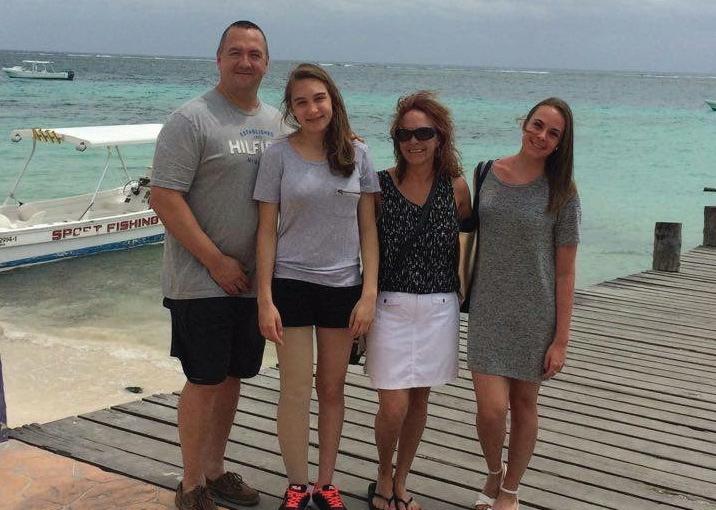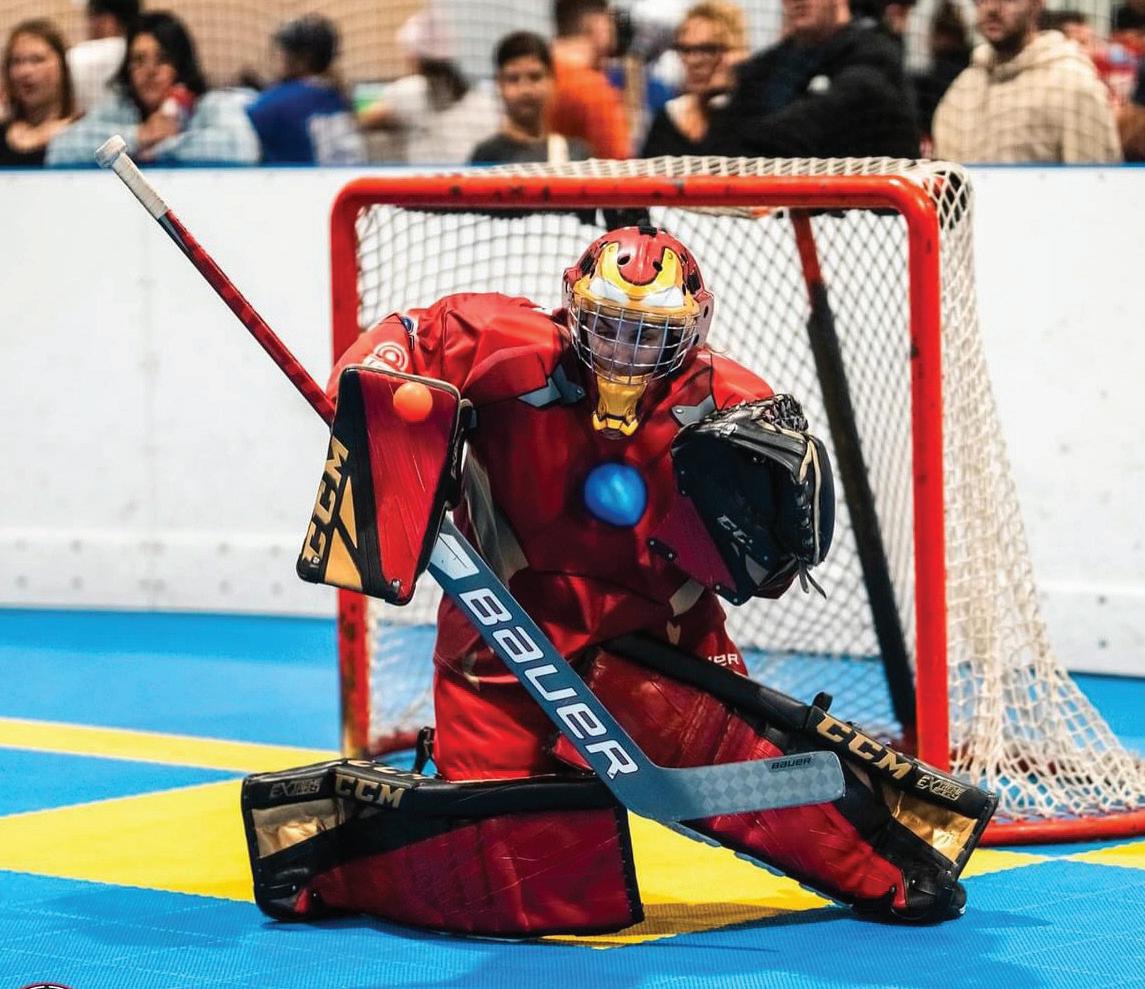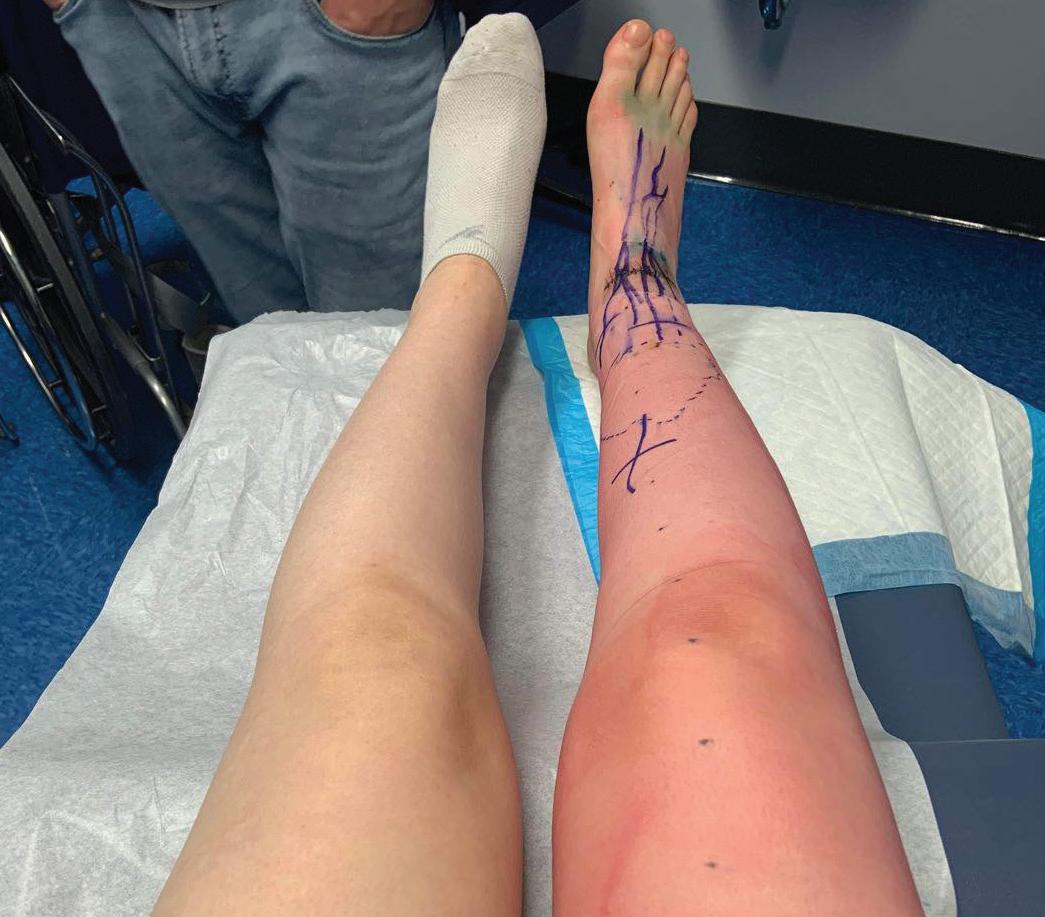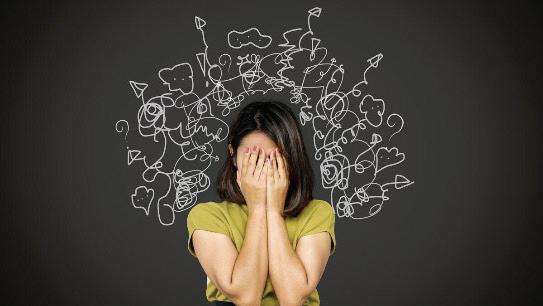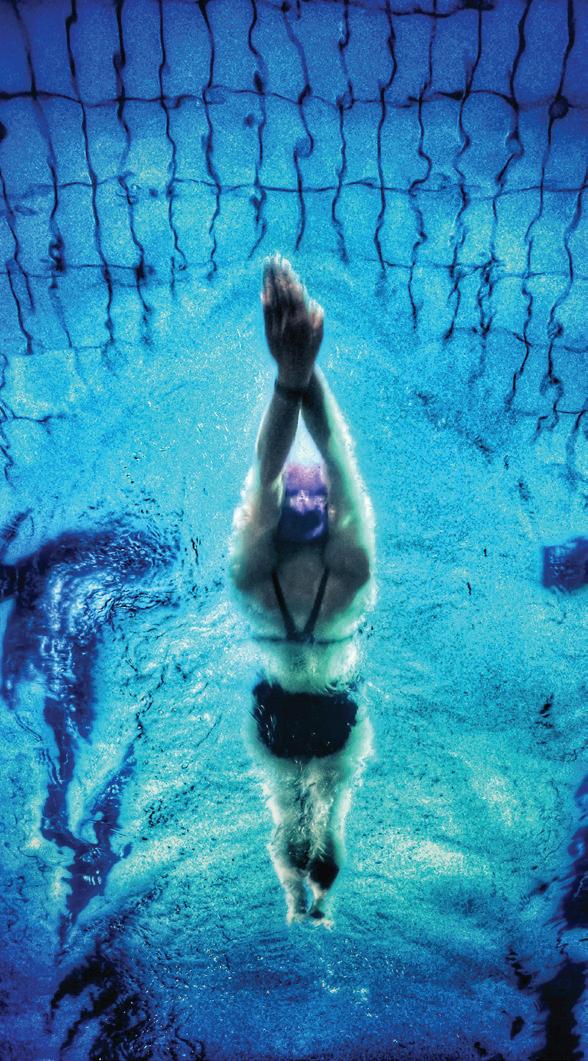LAURIE, A CHAMPION OF PERSEVERANCE
L’info AQL met Laurie Desaulniers, a determined 24-year-old living with lymphedema in both legs. Although Laurie’s journey is full of obstacles, she will stop at nothing to realize her dreams and lead a happy life, surrounded by her family and friends.
We were particularly touched by Laurie’s positive attitude and strength of character, which will surely inspire our readers.
Q:You took the initiative of writing to the LAQ to share your experience. It’s a story that captures most of the difficulties faced by those who are trying to find out why they’re struggling with swelling that "just won’t go away." How did you discover you had lymphedema?
R:It all started in 2015, during the final exams of the school year. I was with my friends and we noticed that my right leg was more swollen than the other. My mother, worried that it might be phlebitis, took me to hospital - after I had convinced her to let me finish my exams. The doctor didn’t find anything and we went to a second hospital. It was the beginning of a journey of perseverance! After a series of medical imaging tests, a pediatrician told us that I had a primary lymphedema in my leg. She told me it’s a disease for which nothing can be done. The pediatrician gave me a prescription for a knee-high stocking, but didn’t refer me to a specialist - as if I could deal with the condition on my own. Anyway, that day I was 15 years old and found out I had lymphedema for the rest of my life.
Q: How did you react to this diagnosis?
R: I cried, of course, and so did my mother. But right away, my mother told me to keep hope alive, and everything she did for me means a lot. At the time, it seemed crazy to have lymphedema without really knowing why. I was told it might been caused by a mosquito bite on my ankle, or a back injury I sustained while playing soccer. Personally, I think the most probable reason is my
growth spurt, which happened around the same time. Since we had to “fix the situation”, my mother and I decided to find a better compression garment than the one prescribed, as we thought the knee-high stocking would cause other problems.
After the initial shock, I no longer viewed the diagnosis as a catastrophe, perhaps because I didn't fully grasp its potential impact. I told myself we’d find a solution. In fact, I even have a rather funny memory from that time: my friends and I would press our fingers into my leg to make smiley faces that stayed for five minutes, and it made us laugh!
While I’m carrying on with my life as a teenager, my motherconvinced that there must be something that could be donestarted seeking help. Several non-specialized therapists "tried" to help me with different approaches, including physiotherapy exercises, naturopathy, osteopathy, and even a sauna tent. Nothing worked. Finally, my mother found a certified lymphedema massage therapist in Montreal. That’s over 125 kilometres from home! Michel Eid, a therapist specializing in lymphedema treatment, changed everything for me. At the first appointment, he introduced me to a 24-year-old patient from Saguenay who couldn't dress normally because his leg was so swollen. This left a strong impression on
“In 2023, a wasp sting caused me cellulitis. Everything healed quickly and I think the LVAs helped.”
“I have one drug in life and that’s sport! So what I found most difficult was the downtime for treatments and after surgery”
me. I quickly realized that I needed to address my lymphedema and start intensive treatments.
Q: Was it difficult to adapt to intensive treatment?
R:
For 14 consecutive days, my mother and I commuted between Magog and Montreal. Every day, my therapist performed lymphatic drainage and applied multi-layer bandages. I was encouraged, because this intensive treatment transformed my condition! I could see the size of my leg getting smaller with each passing day. Initially, my affected leg was 8 cm larger in circumference than my healthy leg. After the intensive phase, the circumference of the right leg had decreased by 2 cm.
During this time, I was in ninth grade in a basketball-focused program and also taking evening driving lessons. This meant I missed school in the afternoons for my treatments. During the long commute, I caught up on missed coursework and studied for all my other subjects, including driving. For this class, I had no choice but to wear hockey pants over my bandages. In addition to my parents' support, I was fortunate to have my friend Alex-Sandra St-Pierre there for me, helping me stay strong.
Q: How did the transition to the maintenance phase go?
R:
Because I was a growing teenager, my next challenge was to control lymphedema during all these physical changes. My therapist was amazing in teaching me how to do my own lymphatic drainage and multi-layer bandaging. Over time, my leg transformed from resembling a pole to having a more natural leg shape. Michel Eid also aided me throughout the first year for my custom-made compression stockings from Europe. These stockings were so thick! But I wore them because I saw that they were effective. I really appreciated that RAMQ covered several
garments for adolescents. It allowed me to experiment to find what suited me best and to navigate through my growth phase. Being very athletic, I also had to adopt new habits to protect my compression stockings and prevent damage.
To make my life easier, my Montreal therapist took the initiative of referring me to a therapist in my area. I began teaming up with Claudia Desrosiers, a physiotherapist certified in lymphedema treatment. I've been seeing her for 7 years now. Initially, it was once a month, but now we've moved to every two months because I manage well on my own. Claudia performs my lymphatic drainage, acts as a counselor to answer my questions about my condition, and manages the ordering of my compression stockings. I really trust her because she stays up-to-date with her knowledge and we have a strong bond.
Q: In your story, you reveal that a second ordeal awaited you...
R: Three years later, at the age of 18, I was working as a cashier, standing all day long. Suddenly, I felt a swelling in my other leg. I immediately recognized the symptoms of lymphedema: it felt like I had water retention around my ankle and on the top of my foot. This time, I was lucky enough to know what to do and to treat myself immediately with one of my compression garments. I still took the time to get a doctor’s diagnosis for my left leg, which means I now have custom-made garments covered by the RAMQ for both legs.
Q:
Has living with lymphedema in both legs restricted your activities and plans for the future?
R: Lymphedema has never been an obstacle for me. I'm an active, sporty girl who plays soccer, basketball, and hockey. I'm the goalkeeper for my women's ball hockey team – arguably the toughest position for legs. If I have to block a shot with my right leg, I’ll do it, and if there’s a problem, I’ll adjust. But that’s never happened so far. I’m convinced that being active helps me a lot. My university studies went well and today I’m a representative in an IT company. I love my job. In fact, it was more my family who were concerned for my future. For my 18th birthday, my father read a beautiful letter in front of everyone talking about my illness, and I could see how much it affected him. But I’ve always felt confident and well supported. Instead of feeling sorry for myself, I take care of my lymphedema the way I was taught, and for the rest, I just go for it!
“When the swelling set in at 15, my right leg was 8 cm larger in circumference than my left. I’m pictured here with my cousin Mathieu, and my friends Nicolas, Raphaëlle and Rebecca.”
“These are my legs today. This is the result of intensive treatment and surgery, combined with my daily compression and sport.”
Q: How did you come to consider lymphatic surgery as a complementary treatment?
R:
As I was developing lymphedema in my left leg in 2018, my father read an article in La Presse about Dr. Marie-Pascale Tremblay-Champagne, a plastic and cosmetic surgeon specializing in the treatment of primary and secondary lymphedema. With the support of my parents and Claudia Desrosiers, I was able to consult Dr. Tremblay-Champagne and get on the waiting list for the surgery. It was in December 2021, between two waves of the pandemic, that I underwent surgery for my lymphedema. The surgeon performed four lymphatic-venous anastomoses (LVAs) on my right leg, the one most affected. Following a month of recovery with no sports activities, the results were already remarkable: I had lost an additional 2 cm in leg circumference. At my first hockey game, I remember putting on my goalie pads and adjusting them the same way on both sides. When I got on the ice, I was amazed to feel that I no longer had any weight to drag around. It felt incredible! My skating is now faster and more even on both sides. I have to say that more than 2 years after surgery, I continue to maintain self-care and wear my compression garments daily. 5, 6 look good. My goal with the surgery was not to stop wearing compression stockings - contrary to what my mother had hoped for me. I just wanted to feel lighter and improve my leg. And since Dr. Tremblay-Champagne assured me that she wouldn’t aggravate my condition and that she inspired trust in me, I didn’t see any harm in going ahead with the surgery.
The surgery has also brought me other benefits, such as the ability to wear shorts in the summer and go to the beach without my compression stockings for long hours. I now recover more quickly from air travel, and I healed quickly from cellulitis following a wasp sting in 2023. Today, my right leg is nearly equal in size to my left leg, with the most critical part of the calf remaining only about 2 cm larger. This marks a huge improvement since my initial diagnosis in 2015.
Q:Looking back, would you say that lymphedema affected your adolescence?
R: Honestly, no. I’ve always had a good circle of friends and a great family, so things went well for me. The important thing is not to isolate yourself and to find the right specialist. Perhaps my fortune also came from being very athletic. On one hand, I didn't wear a lot of dresses, so it didn't affect my style too much. On the other hand, my level of physical activity helped my condition. Certainly, there are people who have asked and still ask me funny questions like, "Why do you wear beige clothes that don't suit your age?" It makes me laugh! Each time, I simply take the time to explain what lymphedema is.
“My victorious moment? When I put on my hockey pads after the surgery, I said to myself: I’ve won!”
“Special thanks also to my friends, Marie, Gabrielle and Alex-Sandra. You’re the best!”
“The support of my father, my mother and my sister, Anne-Marie, are decisive for me. I love my family!”
“I’m travelling to Portugal in 2022, less than a year after surgery. My legs are almost equal, and what’s more, I took the plane!”
“My
therapist,
Q:
Once you were under the care of a specialized therapist, you had an ideal care trajectory, but one that entailed a lot of expenses not covered by the RAMQ. How did you and your family cope with all these costs?
R: When I was in school, my father had excellent insurance from his employer. Unfortunately, this isn't the case for everyone. Today, I have good group insurance at work. So in my case, we only had to pay for the portion of compression garments not covered by RAMQ . I’m really lucky and fortunate. To tell you the truth, if I had to change jobs, I would seriously consider the insurance factor.
Q: Do you have a message for people living with lymphedema?
R: My story isn't about drastic change. It’s a story of perseverance, quick action, and being surrounded by the right people. So, in summary, I truly believe that if we follow our treatments, stay resilient, wear compression garments daily, and remain active, we have everything we need to continue living our lives to the fullest.
On
Laurie would like to thank her team of specialists by highlighting their skills
Michel Eid, massage therapist, certified in lymphedema treatment by Vodder School International. Michel has been treating complex cases at Physio Extra - Ahuntsic-Fleury for many years.
Claudia Desrosiers, physiotherapist, certified in lymphedema treatment by Vodder School International. Claudia works in her private practice Aviva physiothérapie spécialisée, located in Sherbrooke.
Dr. Marie-Pascale Tremblay-Champagne holds a medical degree from McGill University. She specialized in plastic surgery at Université de Montréal and completed a fellowship in breast reconstructive surgery, post-cancer microsurgery and lymphedema surgery in Seattle. Dr. Tremblay-Champagne practices lymphatic surgery at Hôpital Maisonneuve-Rosemont.
Thanks to these professionals for their rigorous and attentive support.
“Dr. Tremblay-Champagne performed four LVAs on my ankle to restore lymphatic circulation.”
Note:
the cover of L’AQL Express, Laurie enjoys a sunny day at the beach.
Michel Eid, wrapped my leg securely in multilayered bandages to reduce its volume.”
BACK TO BASICS
LAQ EDUCATION AND SUPPORT GROUP MEETINGS ARE TAKING A SUMMER BREAK.
Next meeting: September 26, 2024 – 7:00 pm
HIGHER AND HIGHER
SELF-MANAGEMENT THROUGH EXERCISE
Exercise is an essential part of managing your health. It also plays an essential role in the selfmanagement of your lymphedema. For lymph to circulate in the body, we have to move! The muscles attached to our skeleton play a major role in compressing the lymph in our lymphatic vessels and keeping it circulating.
How do you get moving?
• To motivate yourself to get moving, do what’s within your reach. Dance freely, take the stairs, follow YouTube fitness videos in your living room, ride a stationary bike, do weight training or Pilates.
• It’s highly recommended to wear your compression garments during exercise. You’ll double the impact of your efforts to circulate lymph while containing excess fluid.
• Low-impact exercises can be performed in the pool. And since water compression helps lymph circulation, hit two birds with one stone! There’s no need to wear your compression garments when you’re up to your neck in water. Water naturally contributes to compression. AND YOU...
What are you doing these days to stay active and motivated to promote lymphatic circulation?
With the Education and Support Group meetings taking a break this summer, don’t forget that you can benefit from the assistance of our volunteer therapists at any time. You can reach them at 514 979-2463 or aql@infolympho.ca
This service is FREE of charge! We’ll get back to you as soon as possible.
YOUR EXCLUSIVE ADVANTAGES
• A Members’ Area containing all your tools, plus all RAMQ program documents, including the Request for Review form.
Thank you to all our generous donors who make it possible for us to continue our work! Thanks to you, we’re raising awareness of lymphedema and supporting promising research.
Give generously!
HERE THEY ARE!
In July 2024, four new regular members joined us: Marie-Eve Bergeron - Cathy Elliot-Morneau - Diane Lévesque - Lori Patterson
We sincerely hope that you’ll find the support you need from the LAQ to help you live well with lymphedema. And we sincerely thank you for your support!
• Monthly newsletter L’info AQL
• Printed quarterly Pathways magazine
• Self-management booklet Learning to take charge
• Cellulitis Assistance Card
• Self-measurement guidelines for arms and legs
• L’info AQL Surgery edition
• VIP invitations for support education and groups. plus events
• Your tools are mailed to you AND accessible in your online Member Section
The annual dues for Regular Members are $42.
TIP OF THE MONTH
ENJOYING THE MOMENT
Nurturing positive thoughts helps us to move beyond mere acceptance and celebrate the joys of life. As we all know, it’s easy to become overwhelmed by worry or negative thoughts when faced with an unexpected challenge. People with chronic illnesses, such as lymphedema, benefit from nurturing feel-good thoughts and choosing the words they use as part of their self-talk. This is often what puts the situation into perspective and allows you to conclude that the day has been satisfactory.
Here are a few tips to help you influence your thoughts, whether or not you have lymphedema.
Focus on your needs rather than your challenges
Take heat waves, for example, which can make your lymphedema limb heavier. Instead of railing against global warming, ask yourself what your body needs. You could decide to sit down in a cool, comfortable elevated position to read a good book. Or you could temporarily put on your Velcro garment for better control and do the activities you feel like doing. By relieving the feeling of heaviness (your need), you’ll be doing yourself a world of good, both physically and mentally.
Surround yourself with positive people
Some people always look happy... despite their difficulties. Hanging out with people who face similar challenges to you - whether they have lymphedema or not - can change your “mental mood”, energize you and help you feel less alone. If you’re lucky enough to join a lymphedema support community, such as the LAQ’s education and support groups, don’t miss this opportunity to benefit from the life experience of people who have a lot in common with you. These circles are the perfect way to feel supported, inspired, take life in stride and even exchange a few smiles.
© Lymphedema Association of Québec.
PRINTING AND DISTRIBUTION PERMISSION:
Reprinting is permitted for personal use only.
Content may be distributed/shared only with written permission from the LAQ. Request authorization at aql@infolympho.ca
If positivity is out of your reach, opt for neutrality
There are times when it’s pointless to be positive at all costsespecially when your ability to adapt is severely overstretched. Take it easy on yourself, give yourself time and simply try to adopt a neutral, rather than negative, viewpoint. Take the example of a long wait at the clinic for a lymphedema-related wound. Try to replace the thought: “I’ve been here for 2 hours and it’s never going to end” with “I’ve been here for 2 hours and I’m going to get some care eventually”. Even if this doesn’t change the wait, it has the merit of calming your thoughts.
Of course, positive thoughts alone are not enough to control lymphedema. With appropriate treatment, effective self-management and a positive attitude, people living with lymphedema can reduce the negative psychosocial impact of the disease.
The sum of the thoughts that cross our minds in a day, and the importance we attach to them, have a direct influence on our mood and our outlook on life. It's up to us to choose the thoughts that make us feel good as often as possible, and to enjoy life in the present moment











